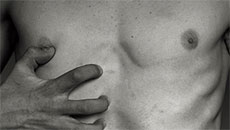For Dr. Sukh Brar, there are many variations of a typical work day. Most mornings begin by 7 o’clock in the operating room where surgery number one is soon underway. The next several hours are often spent administering pain medication, analyzing brain activity and oxygen levels and constantly monitoring vital signs. Once an operation is over, Dr. Brar is then responsible for the aftercare of the patient which can
involve monitoring medicinal effects, assessing and relieving acute pain and ensuring his patient’s overall health. A typical afternoon would then see a similar process repeated for his second patient of the day. Other days, Brar may be a part of up to 12 operations including the same before, during and after care.
Brar is a Consultant Anesthesiologist in the Cardiac Anesthesia Division of the Department of Anesthesiology & Perioperative Medicine at Royal Columbian Hospital in New Westminster. He is the Vice President of External Relations for the British Columbian Anesthesiologists’ Society, which sees him spending much of his time working on patient safety campaigns and educating both the general public and the medical world.
Anesthesiology is the branch of medicine that centres on pain relief throughout the surgical process. Those who practice this, called anesthesiologists, are the medical doctors who attend to patients before, during and after the surgeries to ensure their pain is managed and monitored in the safest and most comfortable way. This type of total care sees doctors preparing patients for their upcoming surgery, administering and monitoring medication during the procedure, treating any complications that may arise and assisting with the recovery process. While much of their responsibility lies within the operation room, anesthesiologists also provide pain relief in other areas including intensive care units, maternity wards and chronic pain clinics.
Brar admits that one of the biggest challenges he and his colleagues face is the public’s misconception about the role of an anesthesiologist.
“People don’t really know what we do,” he explains. “Few people know that we are fully trained doctors, who have then gone through five additional years of specialty training. Most people don’t understand we administer a series of drugs that keep your brain healthy and your vital organs functioning during surgery. Most people don’t know we provide pain relief services to pregnant moms and people suffering with chronic pain conditions.”
The process to become an anesthesiologist, like most medical specialities, is not an easy one. In Canada, potential physicians are required to complete an undergraduate degree followed by medical school. These eight or so years are then followed by an additional five or more in residency, where specialized training in the field of anesthesiology takes place. Extra years may also be required, as in Brar’s case, as many physicians also complete specialty training in areas including but not limited to pain management, cardiac anesthesia or pediatric anesthesia. These 13 years of study provide anesthesiologists with a thorough education of not only anesthetics, but also ensures the doctors have the medical background required to understand all ailments of their patients so that they may deliver the safest and highest quality of care.

Dr. Sukh Brar, Consultant Anesthesiologist in the Cardiac Anesthesia Division of the Department of Anesthesiology
------------------------------------------------------------------------------------------------------------------
For Brar, the decision to enter into the field of anesthesiology wasn’t premeditated. “I initially didn’t have much exposure to anesthesiology – and most people don’t in medical school,” he says. But after his interest was sparked, there were an abundance of reasons why the choice was an obvious one. “The first thing that struck me was that [anesthesiologists are] a group of physicians, who are incredibly calm under pressure and in stressful situations, they have a humility about them that I think is quite refreshing, and they all seem very happy in their jobs.”
He can’t help but add that the breadth of the field is another reason why he so enjoys the profession. “It allows you to interact with people from little babies who weigh less than a pound to someone who is 98- years-old to a pregnant woman... it’s one of the few specialities where you can actually interact with people across the spectrum. The intensity, the diversity of the field, the people themselves.”
While his normal work week might not be what most people envision when they think of anesthesiologists, the variety, long hours and breadth of care are typical for those working in the field.
This failure to understand an anesthesiologists role is putting their services at risk with the necessary resources being stretched thin at the best of times. The British Columbia Anesthesiologists’ Society is working to change that. The Society represents approximately 400 anesthesiologists throughout the province whose mission is to “ensure that anesthesiologists are respected, valued and engaged as leaders of an efficient health care system that delivers timely access to quality anesthesiology care for all British Columbians.”
Brar, in his role as VP and as a physician himself, speaks passionately about what he believes has to be achieved within the next few years. “Canada has some of the highest standards of anesthesiology care in the world and Canadian trained physicians are sought after internationally,” he explains. “Part of our focus over the next few years is to conduct a public education campaign to help people understand what we do and why it is so important. I want people to see anesthesiologists as their ally in the hospital – someone to guide them through their experience safely and comfortably.”
Despite the challenges, extensive education and demanding work schedule, being able to provide total care, ensure the safety and comfort of patients and provide the best possible outcomes is what Dr. Brar and his colleagues continually works towards.






